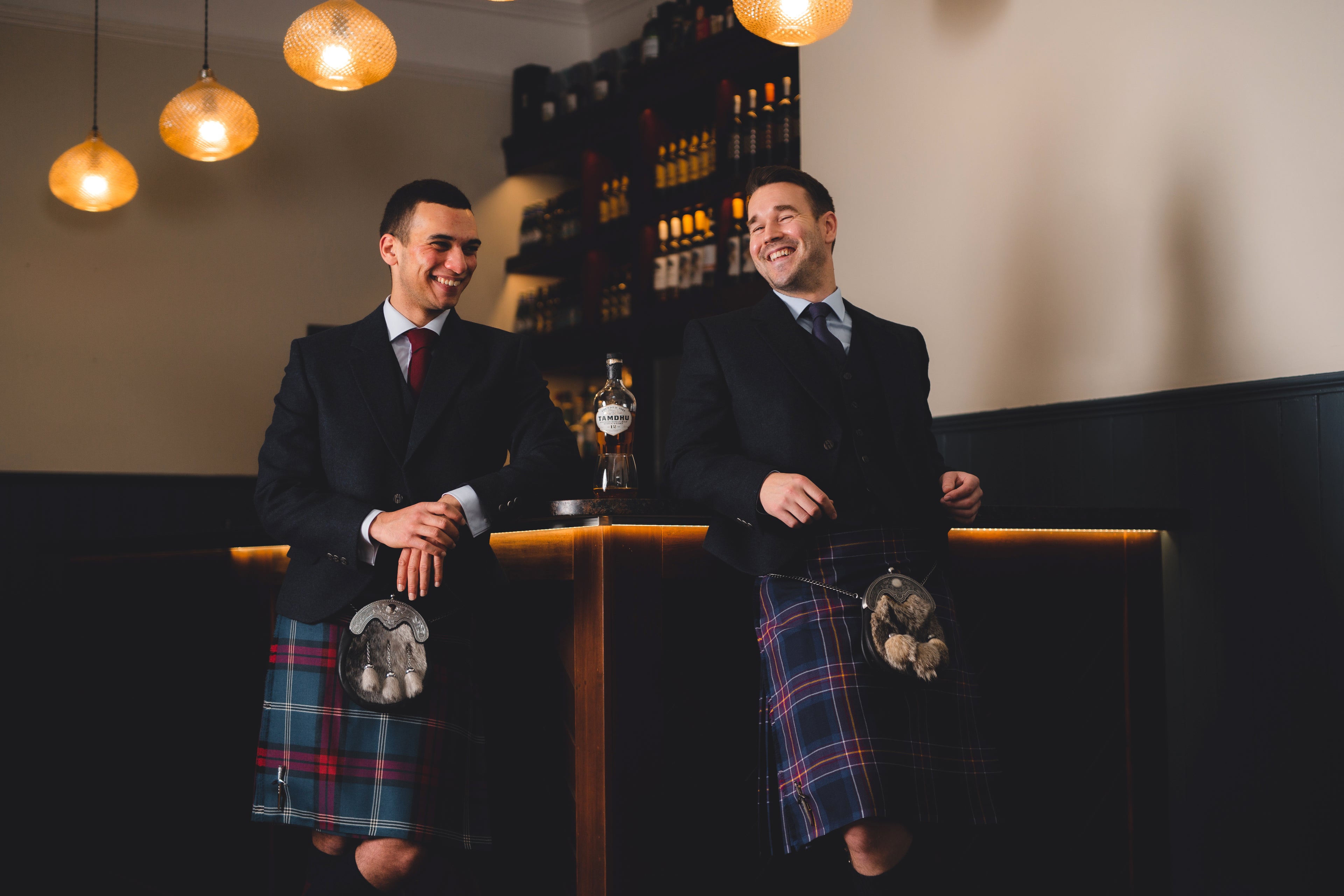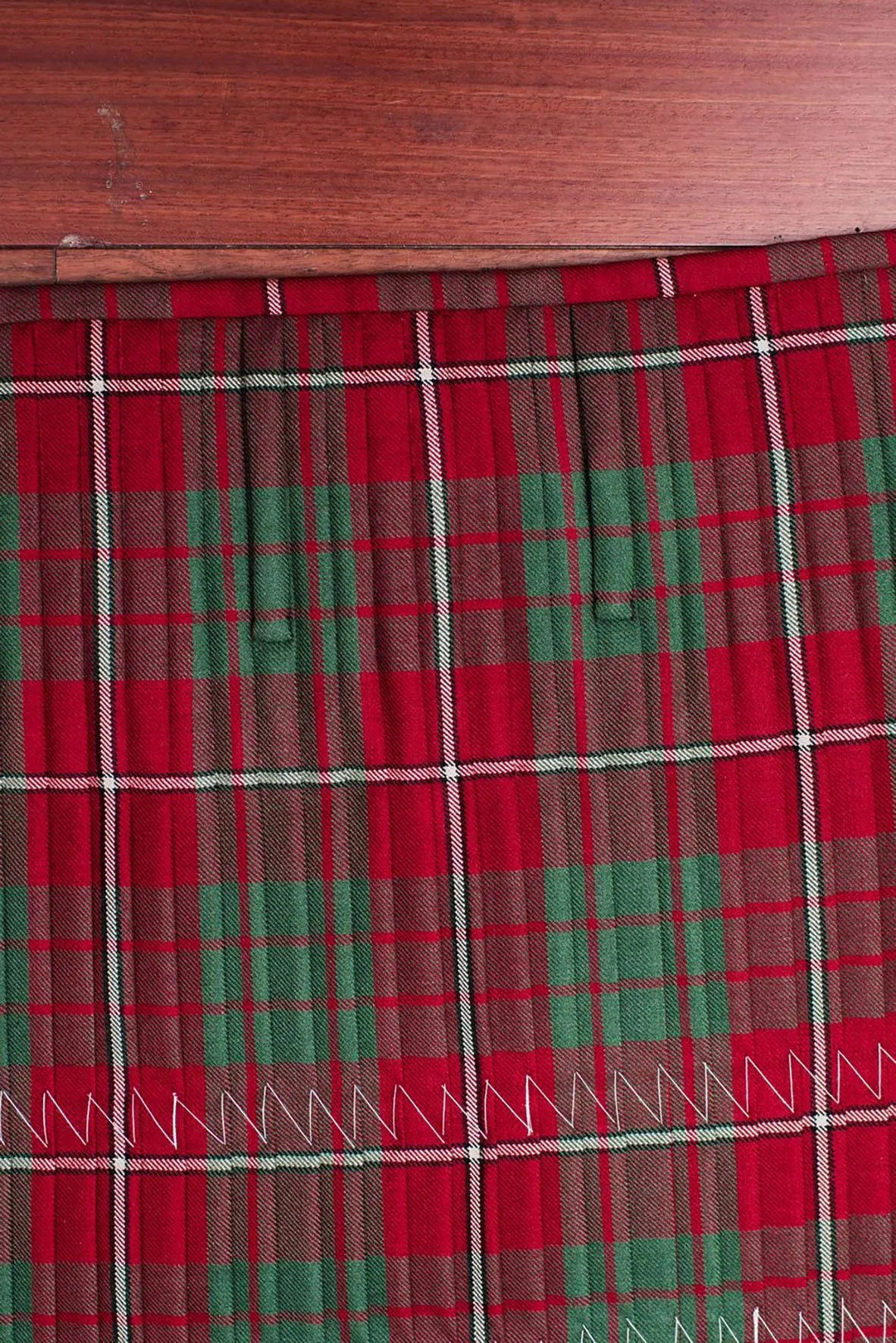
The GNK Standard - Protecting Future Heritage
Raising & upholding new standards of handsewn kiltmaking at Gordon Nicolson Kiltmakers
We pride ourselves in creating beautifully handmade kilts, tailored to perfection and designed to last a lifetime.
Our clan of kiltmakers are experts in their field with decades of experience between them.
What really sets us apart from our competitors is that our kiltmakers are extensively trained in-house within our Edinburgh Kiltmakers Academy, where commitment to detail and dedication to our craft is leading the homegrown Highlandwear industry forward to new standards of craftsmanship.

The Handmade Kilt: Overview
Every handmade kilt is made from 8 to 9 yards of 100% wool cloth of the highest quality.
Each of our traditional handmade kilts is entirely hand sewn by one individual artisan kiltmaker, to exacting standards.
So what is the Gordon Nicolson Kiltmakers standard?
Our first step is to carefully evaluate and measure your body shape to ensure that the kilt we create will be tailored to fit perfectly and allow scope for future alteration. We aim to craft a kilt to last a lifetime.
The Handmade Kilt: Construction
1. Traditional and authentic handmade kilts are crafted by hand using 100% wool cloth, with a yardage no less than 8 yards (adult gentlemans kilt)
2. Your chosen cloth will be carefully cut to length, and then the tailoring of the kilt begins.
3. Two flat aprons sit one on top of the other at the front of the body when the kilt is worn, with the pleats running around the back. The aprons are perfectly sized to fit and flatter your shape.
4. Each pleat is meticulously plotted, either recreating the tartan itself when pleated to the sett - or alternatively -matching stripe to stripe following the military tradition of pleating to the stripe. Our kiltmakers are happy to demonstrate pleating options for your consideration.
5. Your Gordon Nicolson Kiltmakers kilt will have no less than 27 pleats (in most cases) however we always aim for more, for increased fit.
6. Necessary pleat sizes are carefully calculated using mathematical equations and are chalked onto the cloth, each pleat tapering slightly to create accurate shaping around the bum and into the small of the back - the most precise element of your kilts construction.
7. Each individual pleat from the lower hip area to the waist is now precision handsewn in place, one to the other. Upwards of 3000 stitches will be used per kilt, ensuring the horizontal lines are all perfectly matched and each pleat is perfectly proportioned and uniform.
8. We reduce bulk inside the kilt by cutting away excess cloth and reinforce our kilts internally with canvas, so the wool may keep its shape when you are moving or sitting.
9. The kilt is held in place with three perfectly placed buckles in a finish of your choice, attached with handmade tartan chapes. The single buckle connects to the under apron strap through a neatened hole between pleats. The twin waist and hip buckles connect over the pleats to the front apron straps.
10. The waistband is added, measuring approximately 1.5cm wide, and is carefully placed to pattern match the body of the kilt. A cotton lining runs around the internal body of the kilt for comfort.
11. Sporran loops are attached near the waistline - note these are not for a belt to run through, but are there to secure your sporran chain.
12. The front apron is finished with a three layer fringe - a nod to the unfinished, rustic form of the tailored kilts predecessor, the Feileadh Mor.
13. Finally a pair of handmade matching tartan flashes are added to elastic garters, to be worn with traditional kilt hose, to finish your kilt ensemble.
When you collect your kilt you will notice rows of large white basting stitches holding the lower, loose portion of pleats together - we press our kilts twice before they reach you, and this stitching ensures your pleats are clean and crisp. We recommend that you carefully remove the basting stitches just before you are about to wear the kilt for the first time.
The Handmade Kilt: Details
-

The Front Apron
The front apron is the flat front of the kilt which is visible when worn. The fringed edging is perfectly proportioned to 1 neat cm and is made up of 3 layers. The apron is perfectly measured to fit and flatter your shape and held in place with 2 leather straps placed at hip and waist levels.
-

The Pleats
The pleats are fundamental to the engineered fit and movement of the kilt. Each pleat is carefully measured, chalked, tapered and handsewn, ensuring the perfect fit around the body, recreating the sett or stripe of the tartan.
-

The Sporran Loops
Carefully sized, crafted and pefectly placed along the pleat so as not to show, your kilt has two sturdy loops to securely hold the sporran chain in place.
-

The Buckles
Three accurately placed buckles (in a metal finish of your choice) fasten the corresponding waist and hip straps securely to hold the kilt comfotably in place.
-

The Basting
These obvious white thread stitches temporarily hold the lower pleat sections in place for crisp final pressing and easy transportation (when your kilt is either collected or shipped).
Keep this basting in place until your first wear, when you can quickly and easily remove the stitches to reveal the showstopping swing of your meticulusly pleated kilt !
-

The Finishing Touches
Each kilt is completed with a strong cotton lining for neatness and comfort. Finally a label is added - our seal of approval.
-

The Flashes
The flashes are made from excess cloth cut away during your kilts construction, ensuring a perfect match to complete your highlandwear outfit.

The Kilt: Aftercare
A kilt is for life if you do your bit in looking after it!
Leave the white basting stitches in until you plan to wear it, then carefully cut them with small sharp scissors and gently pull the stitches out.
Moths are a killer for kilts - stay vigilant, keep your kilt in a kilt bag and if there is sign of moth damage, put your kilt in the freezer to kill off any mites.
Kilts don't require much cleaning if they are aired out from time to time, but if it does need a clean and press, we recommend dropping by us again for it to be expertly carried out.







